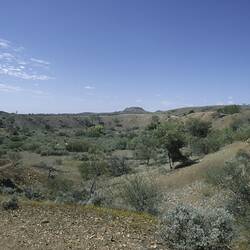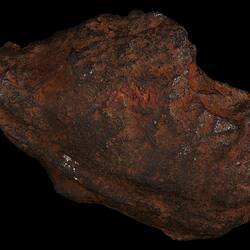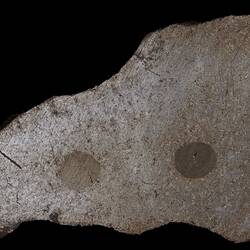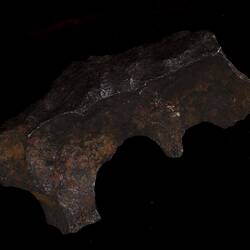The Henbury meteorite fell 4,700 years ago in what is now the Northern Territory, Australia. The meteorite broke into fragments as it fell, producing over a dozen craters as they hit the Earth. The largest of the craters in this crater field is 180 m wide. At least one of the craters is thought to have formed due to an explosion after impact that scattered iron shrapnel around the crater field. The crater field and meteorite fall feature in the stories and traditions of several of the region's First Peoples.
The Henbury craters were known to Europeans by 1899 but what they were remained a mystery for decades. The prospector J. Max Mitchell (dates unknown) realised that they were impact craters when he explored the site after seeing what he recognised as a piece of meteoritic iron at a local cattle station in 1916. He found at least one fragment of meteorite which he sent to Professor Kerr Grant (1878-1967) at the University of Adelaide in 1931.
Grant and Professor Sir Douglas Mawson (1882-1958) arranged for an expedition to the craters in May 1931. They selected Arthur Richard Alderman (1901-1980), who had previously worked on the Karoonda meteorite which had fallen in 1930, and F. L. Winzor (dates unknown), a lecturer in the University of Adelaide's chemistry department. Alderman and Winzor found additional evidence that the craters were impact structures and discovered many pieces of meteoritic metal around the site, collecting 800 pieces. Alderman's 1932 paper on their expedition was the first of many scientific studies published on the craters and the meteorite material found around them.
Shortly after in June 1931, Robert Bedford (1874-1951, born Robert Arthur Buddicom) visited the site with his brother and a colleague from the Kyancutta Museum and Library, South Australia, which Bedford had founded in 1929. During this trip they collected 550 pieces of meteoritic iron from the site. Bedford sent 542 of these pieces, totalling 146 kg, to the British Museum of Natural History. This was the first of many visits Bedford made to the crater field between 1931 and 1938.
Museums Victoria holds nearly 40 pieces of Henbury meteorite. Of these, 25 were purchased from in 1972 when the Kyancutta Museum's collections were dispersed. These were likely collected by Bedford on one of his trips.
The Henbury meteorites are octahedrites, a common type of iron meteorite named for the octahedral shape of their crystal structure. They consist of 90% iron and 8% nickel. Over 500 kg of meteorite material have been found in the Henbury craters, the largest of which was over 100 kg. The weight of the whole meteorite would have been several tonnes.
Today the Henbury Meteorites Conservation Reserve, administered by the Northern Territory government, is a popular tourist destination.
More Information
-
Keywords
-
Authors
-
Article types
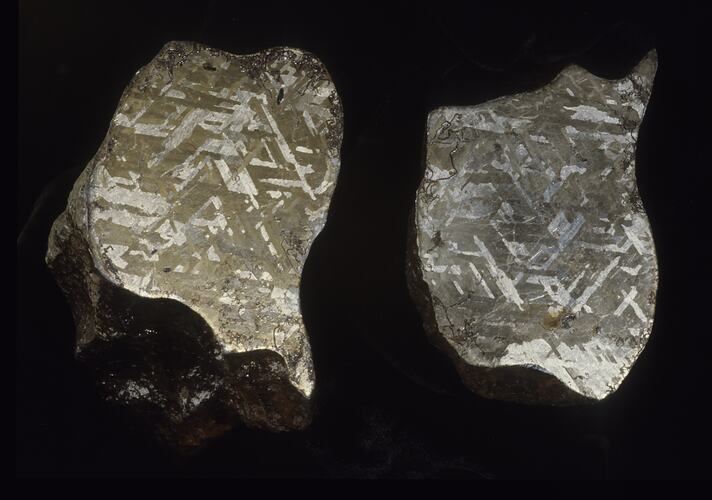

![Henbury Meteorite. [E 4971]](/content/media/35/1017435-thumbnail.jpg)
![Henbury Meteorite. [E 2551]](/content/media/0/1017800-thumbnail.jpg)
![Henbury Meteorite. [E 4481]](/content/media/16/1017816-thumbnail.jpg)
![Henbury Meteorite. [E 4977]](/content/media/32/1017832-thumbnail.jpg)
